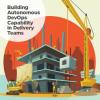 |
How the Right Business Engagement Can Lead to Transformation “Happy Ever After” Winning the hearts and minds of users should be a priority of business transformation from day one. This way the people who really know the day-to-day running of the business have the opportunity to ensure that the new system will meet their and the organization’s requirements when it’s delivered.
|
|
 |
Agile Portfolio Management—A Preferred Approach When Investment Dollars Shrink As you adopt Agile principles it is important to understand the critical difference between Agile Project Management and Agile Portfolio Management—and that you can have one without the other.
|
|
 |
5 Tips to Take Your DevOps Pipeline Beyond the Basics The goal of a DevOps pipeline is to create a continuous workflow that includes the entire application lifecycle. But too often, people focus only on the tools and automating everything, not stopping to think whether their processes could further improve performance and efficiency. Let's look at some common challenges to continuous delivery and then learn five tips for refining your DevOps pipeline and taking it to the next level.
|
|
 |
When DevOps Gets Lost in Translation The waterfall method of developing software is a bunch of translation activities: The design is a translation of the requirements into the language of architecture, the code is another, and a formal test process is a third. And with each translation, there’s the opportunity to introduce error. When your DevOps team is isolated, it creates another handoff, and another point of failure.
|
|
 |
Using Agile and DevOps to Achieve Quality by Design When software nears completion, it is the wrong time to focus on quality. Product delivery improves if you invest in a plan, validate in small increments, and focus on continuous testing.
|
|
 |
Building Autonomous DevOps Capability in Delivery Teams After setting up a DevOps team and adopting continuous delivery practices, product releases may not be as smooth as they could be. The missing ingredient requires empowerment and autonomy.
|
|
 |
The Power of Thinking Upside Down Software developers can become bogged down trying to keep up with agile process and procedures. Get better results by rethinking your approach to balancing focus, agility, management, and testing.
|
|
 |
Reshaping Our View of Agile Transformation Transforming a software development team to agile may not go as planned. The real change requires a phased approach to earn agile acceptance. That mindset must extend beyond the team to the entire organization.
|
|
 |
Finding Microefficiencies in Agile Practices: An Interview with Melissa Tondi Melissa Tondi discusses retuning your standard agile practices to better engage the project team, enabling them to write code that will pass testing and free testers to assume the role of user advocate.
|
|
 |
Identify Bottlenecks in Your Agile and DevOps Processes: An Interview with Tanya Kravtsov In this interview, Tanya Kravtsov, a director of QA at Audible, explains why identifying bottlenecks is so critical when you’re turning to agile and DevOps, as well as how automating manual processes can lead to better quality.
|
|
 |
Accelerate Testing and Development with Continuous Delivery: An Interview with Naga Jayadev
Video
In this interview, Naga Jayadev of CA Technologies digs into continuous delivery, continuous testing, DevOps, and virtualization. He explains what he does at CA Technologies, the trends when it comes to testing, and the value of velocity within your development lifecycle.
|
|
 |
DevOps: Find Solutions, Not More Defects: STARWEST 2015 Interview with Andreas Grabner
Video
In this interview, TechWell speaks with Andreas Grabner, a performance engineer who has been working in this field for the past fifteen years. At STARWEST 2015, he presented DevOps: Find Solutions, Not More Defects.
|
|
 |
You Can't Improve What You Can't See
Slideshow
From value stream mapping to burndown charts, making things visible is a core component of the continuous improvement process. But even with all this visibility, much of the data surrounding how your teams work is either not captured or not understandable. This data represents a great opportunity for insights and improvement. Think about it: Your management team tells you that your velocity is too low. What do you do? First, you need more information. What does “too low” mean? Why was the velocity low? Did the team deliver value? Brandon Carlson will share one team’s surprising insights when they analyzed previously invisible data. He'll also tell you how to discover what the highest risk areas of the system are for enabling the most cost-effective regression test strategy. It's all there, only tucked away where no one can see.
|
Brandon Carlson
|
 |
Unlocking Retrospectives
Slideshow
Retrospectives empower teams to learn and improve. But many teams fail to reach their true learning potential. Ryan was part of a team that held retrospectives for a year and a half to fix one line of code. Through the story of this team, he will show you how they turned their retrospectives from a meeting with meaningless action items to one that accomplished a meaningful improvement. Ryan will explore the resistance that was met and how it was overcome. He will show how to shift to a hypothesis-driven retrospective that to guides specific improvements and learning goals. His team made significant changes to their retrospectives and were rewarded with a radical improvement. Breaking through their retrospective impediments and finally embracing a learning mindset empower Ryan's team to fix the legacy line of code that had held the team back for over year.
|
Ryan Latta
|
 |
Innovation: The Art of Being Wrong
Slideshow
[video:https://youtu.be/S_fDFUC4ISY width:300 height:200 align:right]
|
Stefana Saxton
|
 |
Migrating from Test Cases to Real-World Telemetry Measures
Slideshow
Ken Johnston sees today’s software ecosystem in the light of Everything as a Service (EaaS). Operating systems like Windows, Android, and Chrome OS all ship regularly like a service. Browsers automatically update every few weeks, and apps are constantly updating through all the app stores. Although getting a test to pass once and signing off has gone by the wayside for software testing, still we run test cases over and over again. Ken shares how Microsoft took millions of test cases—yes, actually millions—and turned the important ones into measures based on real world telemetry. Massive amounts of data coming in from real devices and real users measure product quality and tie it to key customer satisfaction metrics.
|
Ken Johnston
|
Visit Our Other Communities
CMCrossroads is a TechWell community.
Through conferences, training, consulting, and online resources, TechWell helps you develop and deliver great software every day.
